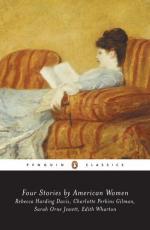|
This section contains 8,951 words (approx. 30 pages at 300 words per page) |

|
SOURCE: “Of Metatexts, Metalanguages, and Possible Worlds: The Transformative Power of Metanarrative in C. P. Gilman's Later Short Fiction,” in American Literary Realism, Vol. 31, No. 1, fall, 1998, pp. 41-59.
In the following essay, Cutter analyzes Gilman's stories about language.
In The Man-Made World; or, Our Androcentric Culture [hereafter abbreviated as The Man-Made World] (1911) Charlotte Perkins Gilman articulates a feminist critique of language that interconnects women's oppression and the linguistic practices of a patriarchal society. On the grammatical level itself language reflects women's disempowered social status, as Gilman explains: “Even in the naming of other animals we have taken the male as the race type, and put on a special termination to indicate ‘his female,’ as in lion, lioness; leopard, leopardess; while all our human scheme of things rests on the same tacit assumption; man being held the human type; woman a sort of accompaniment and subordinate assistant, merely essential...
|
This section contains 8,951 words (approx. 30 pages at 300 words per page) |

|


